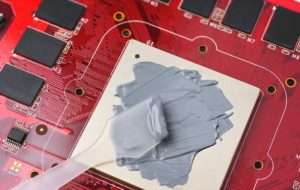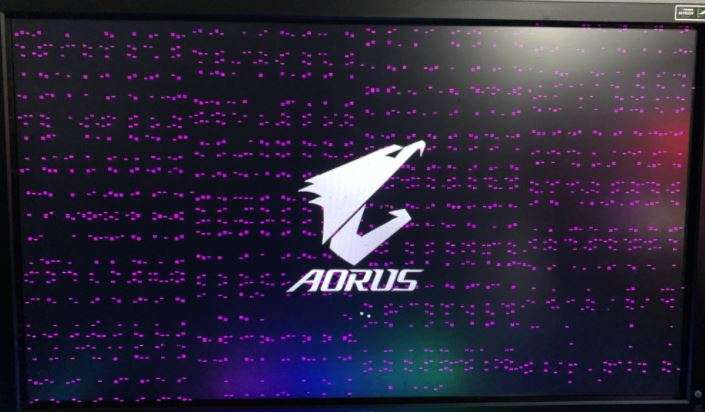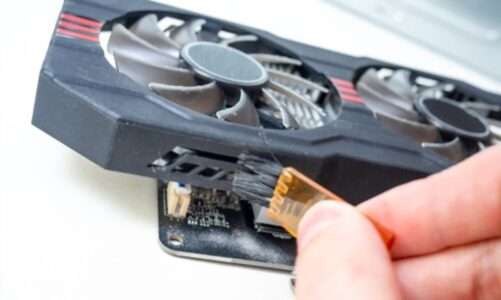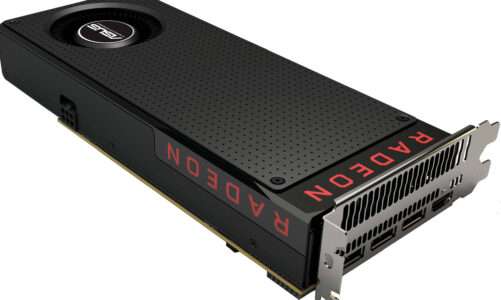Quick Navigation
What is GPU artifacting?
GPU artifacting is when there is some kind of glitch that is causing you graphics processing card to malfunction .GPU artifacting mostly occurs when you are overclocking your graphics card and it overheats. Mostly the artifacts arise due to the rising temperature of a GPU. At this point, your GPU won’t show any BSOD error or ultimately crash but it also does not show the visual data in its true form. Most often you will see pops and flashes on your screen which aren’t supposed to be there. So, how you can get rid of GPU Artifacting? Let’s discuss some possible solutions to this problem.

Most Working Fixes for GPU Artifacting
Here are some working solutions:
1- Lowering the Temperature
Rising temperature is the leading factor in GPU Artifacting. Therefore, lowering the temperature of your graphics card could help your fix this issue. One way is to lower the in-game settings down to a point where there is no more stress on your GPU.
Also, here’s a guide about Safest Temperature Range on a GPU
Another way is to install more fans on your PC case to improve airflow. Make sure you have a spacious PC case that promotes better airflow. Bulky components inside a PC case could cause heat build-up, which increases the overall temperature inside the case. Installing aftermarket CPU fans could help in dissipating more heat.
2- Underclocking your Graphics Card
Higher clock speed is one of the reasons a graphics card shows artifacts. Therefore, underclocking or running the clock at stock speed as set by the manufacturer can fix this issue. You can underclock your GPU with the help of the MSI Afterburner application.
Once you open the MSI Afterburner, it’s fairly simple to underclock your GPU. All you need to do is to move the slider to the left of its default position, and you are done.
3- Change Thermal Paste
If underclocking your GPU doesn’t solve the artifact issue, then you need to do a bit more technical stuff with your graphics card. Changing the thermal paste on your graphics card can solve this issue.

The stock thermal paste tends to solidify over time. So, reapplying a good-quality thermal paste can help in lowering the temperature of your graphics card.
But this is a bit technical process and you have to uninstall the fans and heatsink of your GPU to apply the new thermal paste.
Conclusion
Finally, these are the three most effective methods to fix GPU artifacting. And if somehow these solutions don’t work for you, then there might be some faulty MOSFETs on your GPU that are causing this issue.
If your GPU comes in warranty, then it’s better to send it back to the manufacturer to fix the problem or get a replacement. If the warranty period of your GPU has expired, then it’s time to buy a new graphics card.
GPU artifacting could be due to several reasons, in most cases, it is an overheated graphics card, and lowering the heat could fix this issue. However, in fewer cases, it could be a faulty graphics card.
Below is a detailed video tutorial on how to deal with the artifact issue on your graphics card.
FAQs
How do I know if my GPU is artifacting?
When you cannot recognize anything on the screen in the correct order, it means you are facing GPU artifacting. Sometimes GPU artifacting occurs with a checkered pattern on most portions of your display screen.
Can bad RAM cause artifacting?
In very rare cases, bad RAM could cause artifacts on your display screen. Most often, a faulty ram can either result in BSODs or restarting your PC.
How to Avoid Artifacting?
You can avoid artifacting by running the GPU at a lower clock speed or default speed set by the manufacturer. If you have an entry-level graphics card with a single fan on it, then it’s better not to overclock such a card, or else you may end up in artifacts.
Can dust cause GPU artifacts?
Yes, dust residing on the GPU fan or heatsink absorbs more heat, this results in higher temperature. The rising temperature overheats the GPU which then leads to GPU artifacts. Therefore, it’s better to clean the dust with the help of a compressed air can.

Hi, I’m the author and founder of this blog. I have more than 10 years of experience in the industry. Throughout my journey I’ve tested and reviewed hundreds of graphics card for custom PC builds. I believe my knowledge and experience will help you choose the card that really falls to your needs and budget.



